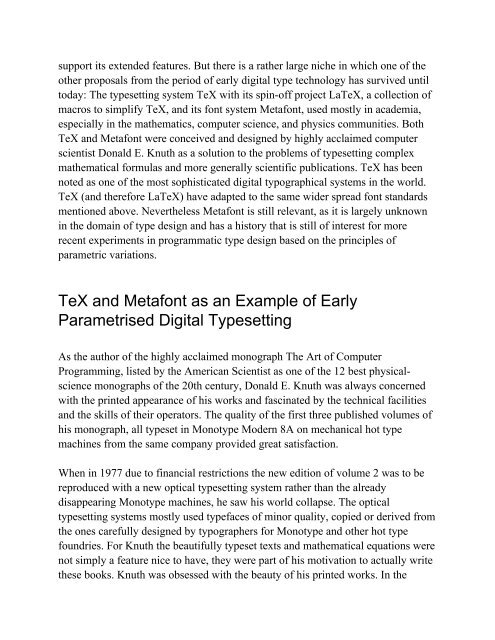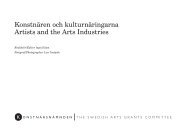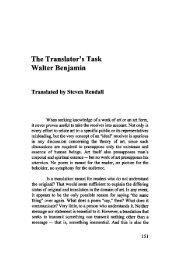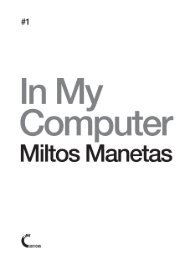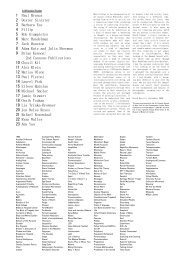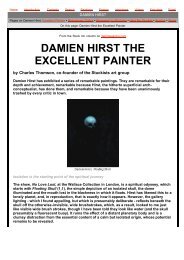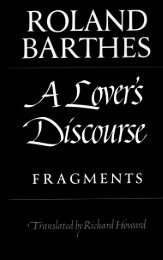Jürg Lehni – Typeface As Progamme - Harald Peter Ström
Jürg Lehni – Typeface As Progamme - Harald Peter Ström
Jürg Lehni – Typeface As Progamme - Harald Peter Ström
Create successful ePaper yourself
Turn your PDF publications into a flip-book with our unique Google optimized e-Paper software.
support its extended features. But there is a rather large niche in which one of the<br />
other proposals from the period of early digital type technology has survived until<br />
today: The typesetting system TeX with its spin-off project LaTeX, a collection of<br />
macros to simplify TeX, and its font system Metafont, used mostly in academia,<br />
especially in the mathematics, computer science, and physics communities. Both<br />
TeX and Metafont were conceived and designed by highly acclaimed computer<br />
scientist Donald E. Knuth as a solution to the problems of typesetting complex<br />
mathematical formulas and more generally scientific publications. TeX has been<br />
noted as one of the most sophisticated digital typographical systems in the world.<br />
TeX (and therefore LaTeX) have adapted to the same wider spread font standards<br />
mentioned above. Nevertheless Metafont is still relevant, as it is largely unknown<br />
in the domain of type design and has a history that is still of interest for more<br />
recent experiments in programmatic type design based on the principles of<br />
parametric variations.<br />
TeX and Metafont as an Example of Early<br />
Parametrised Digital Typesetting<br />
<strong>As</strong> the author of the highly acclaimed monograph The Art of Computer<br />
Programming, listed by the American Scientist as one of the 12 best physicalscience<br />
monographs of the 20th century, Donald E. Knuth was always concerned<br />
with the printed appearance of his works and fascinated by the technical facilities<br />
and the skills of their operators. The quality of the first three published volumes of<br />
his monograph, all typeset in Monotype Modern 8A on mechanical hot type<br />
machines from the same company provided great satisfaction.<br />
When in 1977 due to financial restrictions the new edition of volume 2 was to be<br />
reproduced with a new optical typesetting system rather than the already<br />
disappearing Monotype machines, he saw his world collapse. The optical<br />
typesetting systems mostly used typefaces of minor quality, copied or derived from<br />
the ones carefully designed by typographers for Monotype and other hot type<br />
foundries. For Knuth the beautifully typeset texts and mathematical equations were<br />
not simply a feature nice to have, they were part of his motivation to actually write<br />
these books. Knuth was obsessed with the beauty of his printed works. In the


